Nothing says summer like biting into a light, refreshing cucumber or devouring a handful of crunchy pickles at your summer barbecue.
Although most people would consider cucumbers to be a vegetable, they are technically a fruit.
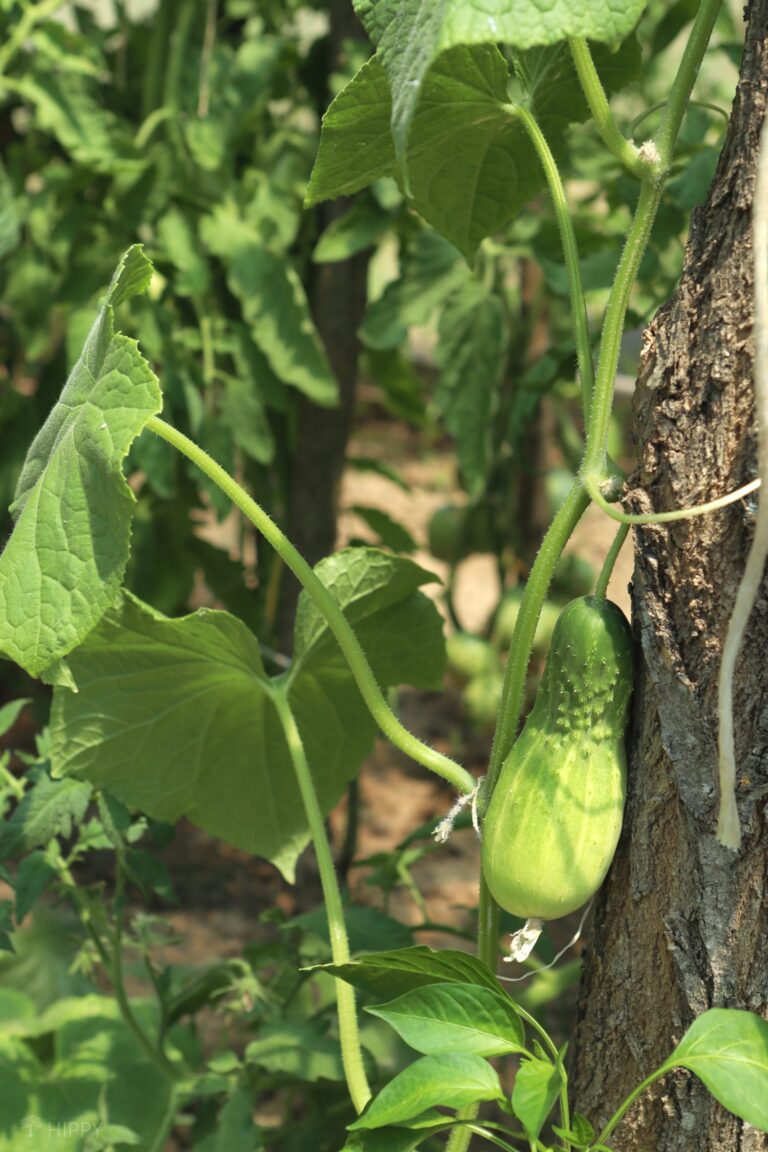
This fruit is probably the second most popular ‘vegetable’ in the United States. It is found in nearly half of all backyard vegetable gardens.
This refreshing fruit is full of vitamins and minerals such as potassium, magnesium, and selenium.
Cucumbers have a high water content and a low calorie count, making them a terrific snack food. With enough water and plenty of sunlight, cucumbers are very prolific and easy to grow.
There are bush-style space-saving varieties of cucumber and vining varieties that can be grown on trellises to save space.
Or you can let your cucumber vines meander through your garden to soak up the sun. Cucumbers grow quickly, with fruit that is ready to eat in as little as six weeks.
Flowers and Cucumber Gender
Before fruit forms on the cucumber vines, flowers appear and must be pollinated. Cucumber plants can produce both male and female flowers.
The male flowers appear first to attract pollinators, and then the female flowers begin to open and are pollinated through insects from the male flowers.
In most cases, you must have both male and female flowers open at the same time for pollination to occur. Female flowers can be identified by their small, cucumber-like growth at the base of the flower.
This growth becomes a cucumber when fertilized. If your cucumbers are not setting fruit, a pollination issue may be to blame. Watch to see if both male and female flowers are open at the same time.
If your garden is short on pollinators, or if your cucumbers are grown in a greenhouse or indoors, you may need to hand pollinate your flowers by using a cotton swab. Simply transfer the pollen from male flowers to female flowers using the cotton swab.
Specialty hybrid cucumbers, known as parthenocarpic cucumbers, are cucumber plants that can grow fruit without being pollinated. These specifically bred vines are typically gynoecious, meaning they produce only female flowers.
However, some cucumber plants that are gynoecious (growing only female flowers) are not parthenocarpic, and will need another source of pollination.
Parthenocarpic cucumbers produce few to no seeds and must be sourced each year. They can be pollinated by other varieties of cucumber, resulting in off tasting or deformed fruits.
If you grow parthenocarpic cucumbers, grow them inside away from other pollinators or under tight row covers. Sweet Success and Diva are examples of parthenocarpic cucumbers.
Monoecious cucumber plants grow both male and female flowers and do not require an external plant for pollinating, but they do require a pollinator such as a bee.
Cucumber Varieties: Slicing and Pickling
Cucumbers come in two basic types: slicing cucumbers and pickling cucumbers. Slicing cucumbers are the kind you eat fresh, and they definitely taste the best and have the most nutrients when they are harvested fresh from the garden.
Slicing cucumbers are the long, straight varieties you usually find at your local supermarket and typically grow six to eight inches long.
They grow with thinner skins which are not bitter and these types of cucumber are slower to develop seeds. Special, hybrid burpless cucumbers are cultivated to have less amounts of a chemical, curcurbitacin, that causes gas when eaten.
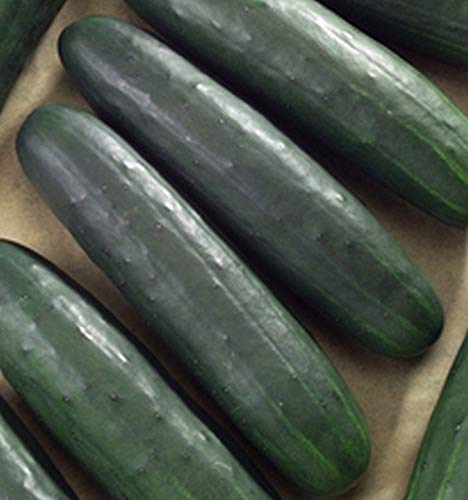
Types of Slicing Cucumber
- Dasher II. Dasher II is a reliable, hybrid cucumber. This classic cuke is a straight, uniform, dark green fruit that grows approximately eight inches long. Germination requires six to ten days, with fruit setting around fifty eight days.
- Sweet Success. Sweet Success is a burpless, parthenocarpic cucumber with a bitter-free skin. It does not need outside pollinators to produce its twelve inch dark green fruits. It is resistant to cucumber viruses. Sweet Success matures in fifty eight days.
- Salad Bush. Salad Bush is a compact cucumber bush that is great for containers and small spaces. The plants may be small, but the cucumber fruits are full size, eight inch long slicing cucumbers. Salad Bush matures in fifty seven days and is prolific and disease resistant.
- Straight 8. This heirloom cuke stands behind its namesake, growing straight eight inch long fruits. Straight 8 is known for its flavor and deep green color. Straight 8 cucumbers do well on a trellis and will generally mature in fifty to seventy five days.
- Spacemaster 80. If space is an issue in your garden, check out the Spacemaster 80. This vining cucumber grows to only thirty six inches. This variety is product, with smooth and slim eight inch fruit. The Spacemaster 80 matures in sixty days and is resistant to Scab and Cucumber Mosaic Virus. Trellis the vines for even better results.
- Burpless #26. This impressive cucumber grows to twelve inches long, but tastes best when harvested at eight to ten inches long. The Burpless #26 is a non-bitter and monoecious hybrid.
- Marketmore 76. The Marketmore 76 is slower to mature than most other varieties of cucumber, requiring seventy days to produce fruit. However, it is worth the wait for the beautiful, slender, round fruits. The vines of the Marketmore 76 are compact and prolific. The flavor is bright and non-bitter. Marketmore 76 is resistant to powdery mildew, cucumber mosaic virus, and scab.
- Diva. Diva cucumbers are great for both slicing and pickling, growing to five to seven inches in length. Divas are parthenocarpic, meaning it needs no pollinators. It is also a burpless, bitter-free, and seedless fruit. This disease-resistant and cucumber beetle -resistant cucumber matures in fifty eight days.
- Tasty Green. This mild, easy to digest fruit matures in just fifty nine days. The dark green fruits grow to ten to fourteen inches long and should be harvested every two to three days. Trellising allows for straighter fruits. This variety is prolific, hardy, and disease-resistant.
- Sweet Slice. Sweet Slice is a vigorous hybrid that does not produce gas. It offers a non-bitter, mild flavor. The slender fruits grow ten to twelve inches and the skin is thin and tender.
- Muncher. Muncher is a great cuke for both pickling and fresh eating. It is prolific, tender and not at all bitter. Because the fruit is nearly spineless, it can be eaten at any point. However, choose four to six inch long cukes for pickling, and six to eight in cukes for fresh eating. Trellising is recommended. The seeds germinate in seven to fourteen days and are mature in sixty days.
Pickling Cucumbers
Less commonly found in grocery stores are pickling cucumbers. These varieties of cukes are less tasty straight off the vine, but make great pickles. They are usually shorter and squatter in shape than a slicing cucumber, similar to a gherkin.
You can eat pickling cucumbers just like you would a slicing cucumber. However, if you do eat them fresh, they will have more of the chemical curcurbitasin, which may cause gas and burping.
You can pickle any variety of cucumber, even slicing varieties, but it may mean you end up with a softer pickle.
- Calypso. Calypso is an interesting hybrid that is great for both pickling and slicing. This heavy producer is gynoecious, meaning it has all or mostly all female blossoms. It is heavily disease resistant and is mature in as soon as fifty days.
- Little Leaf H-19. This parthenocarpic cuke is resistant to many diseases and tolerant of stress. Little Leaf H-19 boasts a bright emerald color. The vines are compact with multiple branches and small leaves which make it easy to harvest fruits.
- Wisconsin SMR 58. This is said to be one of the best heirloom pickling cucumber variety. The small cucumbers have a crisp sweet flavor and are dark green. They mature in just fifty five days. This cucumber does well in northern climates with short seasons and is resistant to Scab and Cucumber Mosaic Disease.
- Eureka. Eureka does it all. This cucumber is the most disease resistant cuke in cultivation. It is great for both pickling and fresh eating, and grows from one and half to five inches long. Fruits are dark green with white spines and matures in fifty seven days after direct-sowing. This cucumber is easy to grow and easy to enjoy.
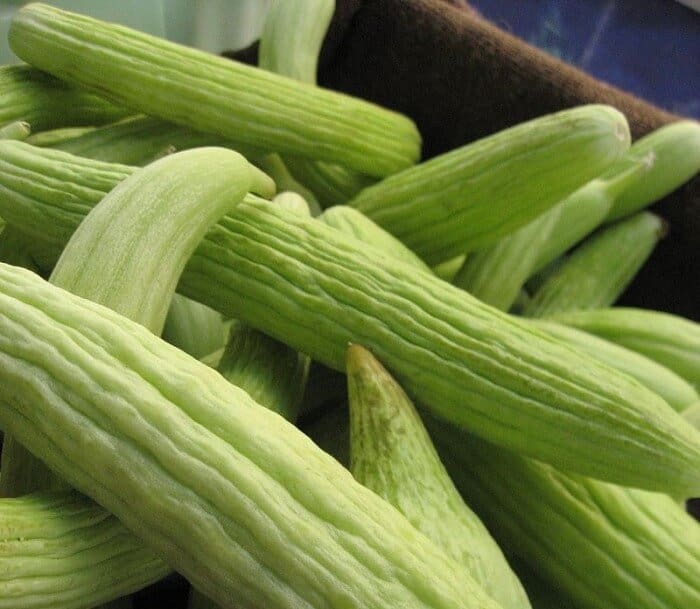
Unusual ‘Cucumbers’
- Armenian Cucumbers. Armenian Cucumbers, or snake cucumbers, are also called uri. It is not actually a cucumber, but is technically a melon with a light cucumber flavor. Although it can grow up to their six inches long, this fruit tastes better when it is harvested around twelve inches. This burpless fruit does not need peeled. It can be served raw or cooked.
- Japanese Cucumbers. This cucumber is long, slender, with a dark green hue. It has very few seeds and a mild flavor. This plant matures in sixty days.
- Lemon Cucumber. Lemon cucumbers are named for their light yellow color, not for their sweet and mild flavor. These cucumbers mature easily in cooler climates. The vines are prolific, so save space by training them on a trellis. They have tender, non-bitter skin and mature in approximately sixty five days.
- Persian Cucumbers. These little cukes are short and thin, growing to around five or six inches. They resemble baby cucumbers, and have an extra crisp texture. It boasts very few seeds and is a burpless variety. This tasty cuke originated in Northern Israel.
How and Where to Plant Cucumbers
Cucumbers love to bask in full sun, so choose a sunny spot in your garden for your cukes to grow.
Make sure there is enough room if you are planting vining varieties as they will spread out. If you need to save space, you can easily trellis cucumber plants and use their shade for other vegetables that need less sunlight.
When you are ready to start your cucumbers, direct sow or transplant your cucumbers into the ground at least two weeks past the last frost date.
The temperature of the soil should be at least 70 degrees Fahrenheit because cucumbers are highly susceptible to frost.
Cucumbers prefer soil that is moist but not soggy. If your soil is too compact, be sure to mix in organic matter such as compost to loosen the soil before you begin planting.
Check your seed packets for planting information that is specific to the variety of cucumber you want to plant. However, a general rule to follow for cucumbers is to plant seedlings approximately one inch deep.
For trellised cucumbers, allow for one foot between each plant. Otherwise, plant your seeds or plants anywhere from 36 to 60 inches apart.
To direct sow seeds, push two or three seeds straight into the soil, about an inch deep and eighteen to thirty six inches apart. Bush varieties can be planted closer together because they do not have vines that will take up space.
You can start your seeds indoors three weeks before you intend to plant them in your garden, but be sure to harden off the tender seedlings before doing so. Do not set your cucumber plants out too early or they will be comprised by frost.
Growing Needs
Cucumbers are 95% water, which means their number one requirement to thrive is water. Cucumbers need consistent watering.
Your cucumber plants will require approximately one inch of water per week, although they will likely need more when the temperatures are high.
You can test the dryness of your soil by inserting your finger into the soil. If the soil is dry past the first joint of your finger, you need to water. If you don’t water consistently, your cucumbers may become bitter tasting.
Water once or twice per week, or often enough to keep the soil somewhat moist but never soggy.
Mulch around your plants to keep moisture in. Avoid watering the leaves so plants do not fall prey to mildew or other diseases.
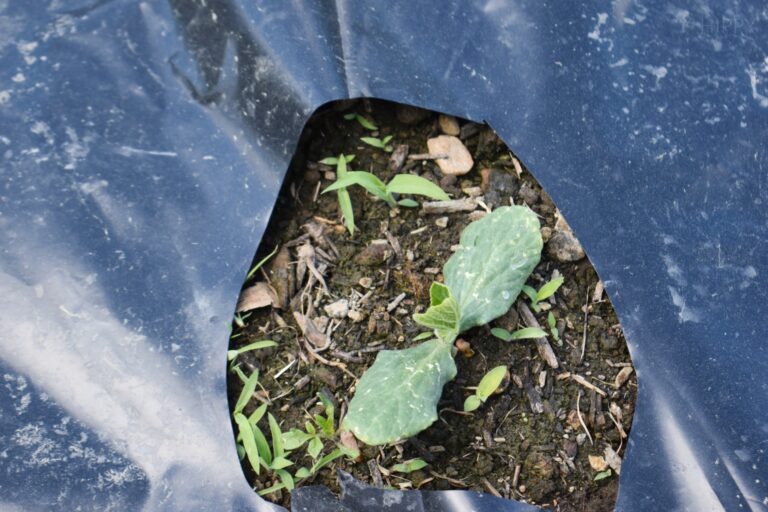
Cucumber Problems
While cucumbers are generally easy to grow, they can be affected by pests and diseases. The most common cucumber pests are slugs, aphids, and cucumber beetles.
Cucumber Pests
- Slugs. Slugs can make a quick meal out of your cucumber plants. Keep slugs at bay by sprinkling a mix of coffee grinds and egg shells around your plants. The smell of the coffee will deter them, and the sharp pieces of crushed up egg shells will make a painful fence. If that doesn’t work, try sprinkling sand around your plants to draw the moisture out of the slugs. Remove rocks or pots that might serve as dark, moist hiding places.
- Aphids. Aphids are tiny insects that gather on plants and leaves. They pierce the plant and suck its fluids, leaving behind plants that appear mottled and develop with stunted growth. You can prevent aphids from doing as much damage to your plants by washing them away with a strong spray of water. Lacewings and ladybugs are natural predators of aphids. Releasing them in your garden will help control the population for you.
- Cucumber beetles. There are two types of cucumber beetles: striped and spotted. Striped cucumber beetles are a quarter inch long with a dark head and yellow and black striped abdomen. They tend to stick to cucurbits, mainly cucumbers, watermelons, and squash plants. Spotted cucumber beetles are similar in size and appearance, but spots instead of stripes. They also feed on cucurbits, along with other plants as well. Adults cucumber beetles will typically feed on leaves and flowers, while the young are more likely to feed on the roots. You can pick off cucumber beetles by hand or with a small vacuum. The use of insecticides is not encouraged because cucumber plants are easily damaged. Prevent cucumber beetles from taking hold of your cucumber crops by planting crops later in the season, after the beetles have emerged and ended their life cycle. Companion planting crops such as tansy and nasturtiums can ward off beetles. You may want to consider releasing predatory insects such as soldier beetles and nematodes if cucumber beetles continue to be a problem in your garden.
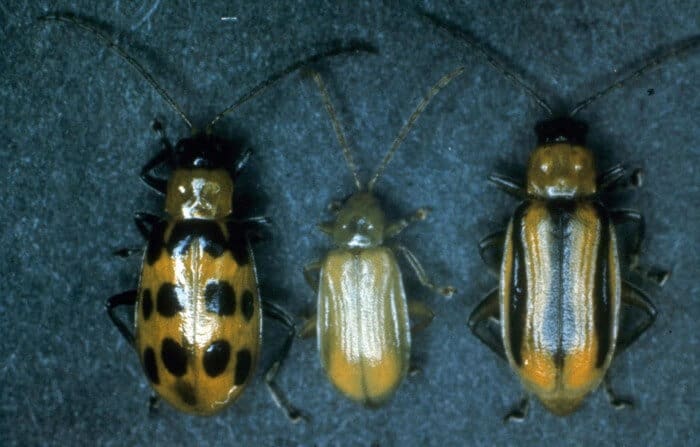
Cucumber Diseases
Cucumbers are susceptible to diseases such as powdery mildew, bacteria wilt, and angular leaf spot. Prevention is the best way to handle these common problems.
- Angular Leaf Spot. This is one of the most common cucumber diseases. It is caused by bacteria that can enter into the plant. This bacteria can survive on dry leaf matter for up to two and a half years. The symptoms begin as wet-looking spots on the underside of the leaf, which grow into lesions. The lesions follow the shape of the leaf’s veins, which gives them an angular appearance. You can prevent this disease by purchasing quality, disease-free seeds and by choosing varieties of cucumber that are immune.
- Bacteria Wilt. This disease is spread by the cucumber beetle. It causes a few vines to wither and die, and eventually affects the entire plant. The first line of defense against bacteria wilt is to control the spread of cucumber beetles which carry it. While insecticides are discouraged due to the fragile nature of the cucumber plant, it may be necessary to use them in areas where the cucumber beetle and bacteria wilt are doing the most damage. Crop rotation may prevent the spread of the beetles and therefore, the disease.
- Powdery Mildew. Powdery mildew is not actually mildew, but a fungus. It leaves a powdery white residue on the leaves of cucumber, squash, and melon plants. It starts with a just a light speckling, and eventually spreads through the entire leaf to the plant. It can cause stunted growth, poor fruiting, and plant death. Powdery mildew happens in areas and seasons of high humidity. Once powdery mildew hits your plants, it is difficult to control, although some have people have had success with treatments using milk, baking soda, and dishwashing soap. The best treatment is prevention. Space plants appropriately to allow for good air circulation. Plant cucumbers in full sun, to help dry off plants quickly and evaporate extra moisture. Avoid watering plants in the evening. Another way to prevent powdery mildew is to choose resistant varieties of cucumber such as Diva.
- Scab. Scab is a fungal disease that affects pumpkin, squash, melons, and cucumbers. The leaves of infected plants will slowly turn from pale green to white. To prevent scab, choose varieties such as Marketmore 76 and practice good crop rotation.
- Cucumber Mosaic Disease. This cucumber disease is a virus that can affect many different plant species, including cauliflower, tomatoes, and cucumbers. This virus is typically spread through aphids and gives the leaves of the infected plant a mottled, blistered appearance. There is no ‘cure’ for Cucumber Mosaic Disease. Once the plants are infected, they must be destroyed and all garden tools will need to be disinfected. The best defense is prevention – keep weeds and aphid populations under control to prevent plants from being infected with the virus.
Best Fertilizers for Cucumbers
Cucumbers grow well in rich, organic soil. If you want to get them started well, mix compost with your potting soil, or mix some compost into the bottom of the hole where you will be planting your cucumbers.
If you want to add fertilizer, use a low-nitrogen, high-potassium pelleted fertilizer.
Fertilize your cucumber plants in two steps. The first application is one tablespoon per plant at the time of planting, and then fertilize again when the first true leaves become visible.
Companion Planting with Cucumbers
Cucumbers are a great plant for companion planting. You can use the shade from trellised cucumbers to grow cooler weather crops that need less sunlight, such as kale or spinach.
Marigolds and nasturtiums can be planted among your cucumbers to help repel pests such as beetles.
Other good companion plants include corn, lettuce, peas, radishes, beans, and celery. Herbs such as sage do not grow well with cucumbers. Sage can stunt the growth of any cucumber plants.
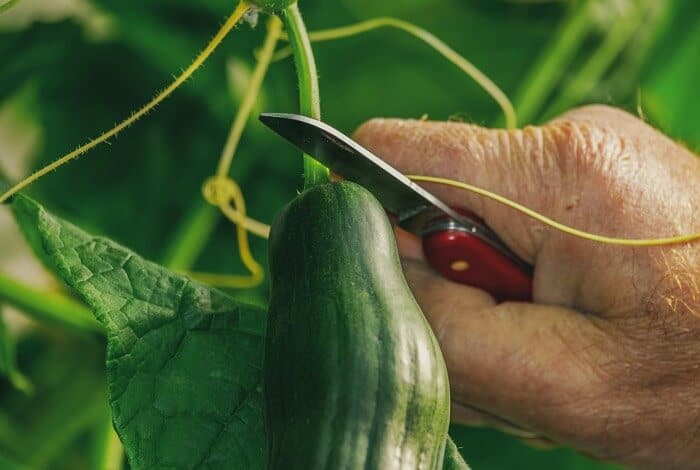
How to Harvest and Store Cucumbers
If you allow your cucumbers to grow too large, they will become bitter tasting. If you harvest infrequently, the plants and vines will become less productive and the skins on the fruit will become tough and difficult to eat.
Instead, harvest your cucumbers often. You may need to harvest cucumbers daily or at least every couple of days. Slicing pickles usually test best when they are harvested at about six to eight inches long.
Dills should be harvested at four to six inches long. For small pickles, harvest the cucumbers at two inches long. Burpless cucumbers are the exception – they can be harvested up to ten inches long and possibly even longer.
Pick cucumbers before their seeds become hard and before the cucumbers turn yellow. For best quality, pick your cucumbers when they are firm, crisp, and a uniform green color.
Never pull or twist cucumbers off the vine, as that may damage the vine and the plants ability to continue producing good fruit. Instead, cut the stem above the fruit with a knife or clippers.
The sooner you eat your cucumbers, the better quality they will be and the more nutrition they will have. However, if you need to store your cucumber, you can wrap them tightly in plastic and this will help retain moisture.
Store your harvested cucumbers in the refrigerator to keep them crisp and cool. Stored properly, cucumbers should last about a week to ten days.
If you are growing pickling cucumbers, you can usually count on growing about five pounds of cucumbers per plant. It is always better to plant a few more than you need and give some cucumbers away then to run out of the fruit or vegetable that you need.
While there are many cucumber varieties to choose from, we love Dasher II for its reliability. Spacemaster 80 is perfect for compact gardens, and Diva and Calypso are great ‘dual purpose’ cucumbers.
For an unusual cucumber, check out the lemon cuke for a tasty treat.
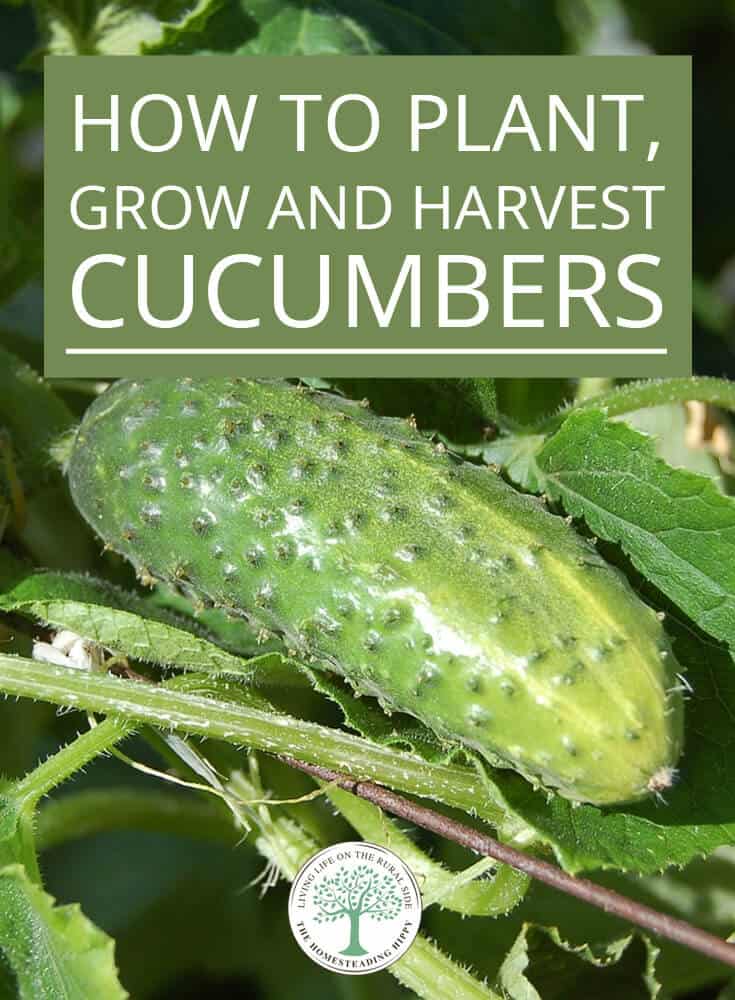
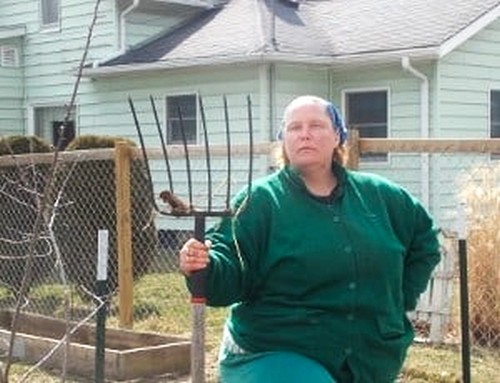
Heather’s homesteading journey started in 2006, with baby steps: first, she got a few raised beds, some chickens, and rabbits. Over the years, she amassed a wealth of homesteading knowledge, knowledge that you can find in the articles of this blog.
Learn more about Heather and the rest of the writers on this page.

I was looking for more information on cucumbers and it looks like I hit the jackpot. I am ramping up on growing more for pickling, etc. and going to have my husband make a trellis apparatus to save garden space. Very thorough article that I will be printing at some point, but for now bookmarked. Thanks for all the info!